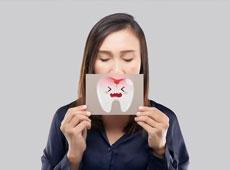Avoid periodontal disease

Gingivitis and periodontitis develop slowly. To avoid their further harm, regular check-ups are recommended.
Gingivitis and periodontitis develop slowly. To avoid their further harm, regular check-ups are recommended. Gingivitis and periodontitis The main cause of periodontal disease is the buildup of bacteria. It is dental plaque (accumulation of bacteria) which is the main agent responsible for the development of these periodontal diseases.
Gingivitis is an inflammation of the gums which then becomes painful and bleeds at the slightest contact: when brushing your teeth, or when biting into an apple, for example… Plaque accumulates due to inappropriate or ineffective brushing techniques. This plaque accumulates at the gingival level and transforms into tartar after 72 hours by calcifying, which then creates a defense against these bacteria through an inflammatory reaction limited to the gums, called gingivitis. Very adherent and porous, tartar harbors numerous microbes which promote the development of cavities and create inflammation of the gums.
The treatment of gingivitis is based on improving oral hygiene with effective brushing, at least twice a day, using a soft toothbrush, in order to remove dental plaque. With possibly the use of antiseptic mouthwashes. This can go with the accumulation of periodontal risk factors leading to periodontitis and creating bone loss. Risk factors can be genetic, environmental (tobacco, etc.), local (poor occlusion, dental malpositions, bruxism) or linked to general health (unstabilized diabetes, pregnancy, etc.).
Common signs of gingivitis: the gum is red, smooth, swollen, it bleeds easily on contact and sometimes even spontaneously. Healthy gums should be pink and adherent to the underlying bone.
Treatment
Advice for appropriate hygiene, including the use of dental floss and interdental brushes. Annual scaling carried out in the office Possible use of antiseptic mouthwashes, on prescription and for a short duration Bleeding gums should lead you to consult. Make an appointment as soon as it appears. Periodontal recessions This is a change in the gum at the neck of the tooth. During periodontal recession, the gums recede, so that the root gradually becomes exposed. The discomfort can only be aesthetic but also lead to dentin hypersensitivity.
The treatment consists of: An adaptation of the brushing method to this situation of gingival fragility Careful monitoring of developments Please note: in the event of significant and/or unsightly gingival loss, a gum graft may be offered. Periodontal abscess This is an acute infection localized in a periodontal pocket. Signs: swelling, redness, severe pain. The tooth may be mobile. Emergency treatment is required immediately.

.png)